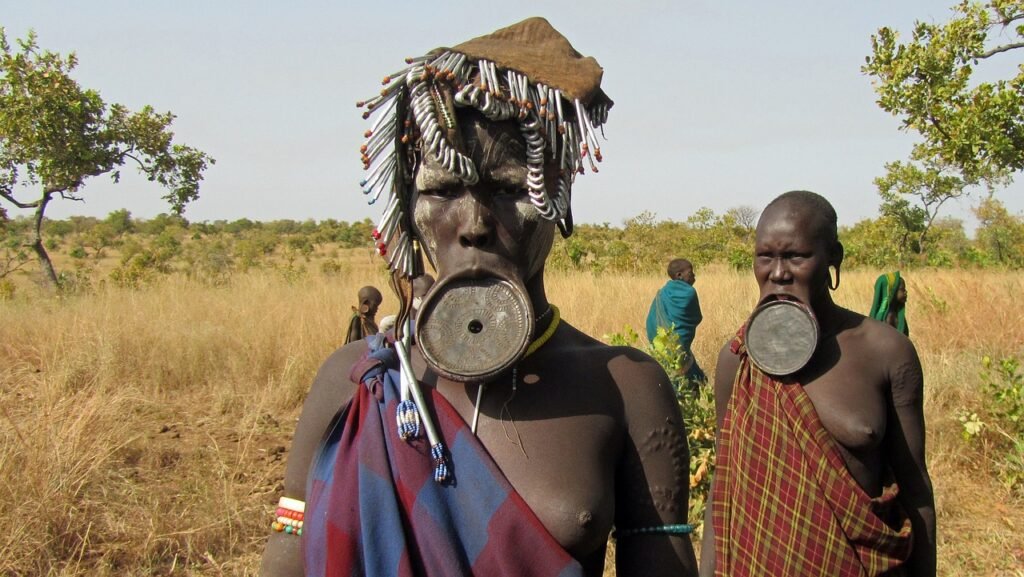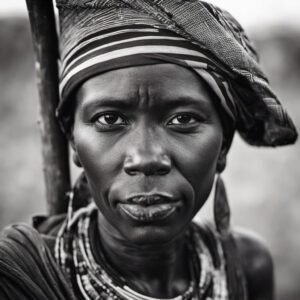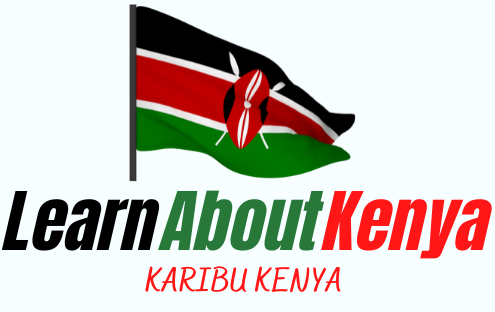So you’re considering a trip to Kenya and wondering if it’s possible to visit indigenous tribes? Well, you’ll be delighted to know that Kenya offers a unique opportunity to immerse yourself in the rich cultural heritage of its indigenous tribes. From the proud Maasai people with their vibrant traditions and intricate beadwork to the Samburu tribe known for their expert tracking skills, a visit to these tribes provides a fascinating glimpse into their way of life, customs, and traditions. Get ready to embark on an unforgettable journey of learning, respect, and connection as you step foot into their world and forge lasting memories with these remarkable communities.

This image is property of pixabay.com.
Overview of Indigenous Tribes in Kenya
Kenya, a country known for its diverse landscapes and abundant wildlife, is also home to numerous indigenous tribes. These tribes have a rich cultural heritage that dates back centuries, offering a unique and fascinating glimpse into Kenya’s history and traditions. In this article, we will explore the diversity of indigenous tribes in Kenya, their cultural significance, the challenges they face, and the importance of responsible tourism in supporting these communities.
Introduction to Indigenous Tribes
Indigenous tribes in Kenya are groups of people who have inhabited the land for generations, long before the colonizers arrived. They have their own distinct languages, customs, and ways of life that have been passed down from one generation to another. These tribes have a deep connection to their land, which is an integral part of their identity and survival.
Diversity of Indigenous Tribes
Kenya is home to a wide range of indigenous tribes, each with its unique customs and traditions. Some of the most well-known tribes include the Maasai, Samburu, Turkana, Kikuyu, Luo, and Luhya. These tribes are spread across different regions of the country, with each one having its own distinct cultural practices, languages, and art forms.
Cultural Significance of Indigenous Tribes
Indigenous tribes in Kenya play a vital role in preserving the country’s cultural heritage. Their traditions, rituals, and ceremonies reflect their close ties to the land and the environment. For these tribes, cultural practices are not just a way of life, but also a means of passing on knowledge, wisdom, and values from one generation to another. They have a deep understanding of their natural surroundings and practice sustainable lifestyles that promote harmony between humans and nature.
Understanding Indigenous Communities
To truly appreciate and respect indigenous tribes, it is important to understand their lifestyle, traditions, social structures, and economic activities. This knowledge helps foster cultural sensitivity and responsible engagement with these communities.
Lifestyle and Traditions
The lifestyle of indigenous tribes in Kenya is deeply rooted in their connection to the land and their traditional practices. Many tribes continue to live in traditional homesteads and herd livestock as a primary means of sustenance. They have intricate social structures built upon respect for elders, communal decision-making, and a strong sense of community.
Social Structures
Indigenous tribes have well-defined social structures that contribute to the cohesion and harmony of their communities. Elders hold significant influence and are respected for their wisdom and life experiences. It is through the elders that the traditions and knowledge of the tribe are preserved and passed down to younger generations.
Economic Activities
Economic activities within indigenous tribes vary depending on their geographical location and available resources. Many tribes engage in agriculture, animal husbandry, hunting, fishing, and trade. Crafts and traditional art forms also play a significant role in the economic activities of these communities, providing an avenue for cultural expression and economic sustainability.

This image is property of pixabay.com.
Tourism and Indigenous Tribes
Tourism offers an opportunity for visitors to interact with indigenous tribes in Kenya, but it is essential to approach this form of tourism with responsibility and respect.
Responsible Tourism Practices
Responsible tourism practices are crucial when visiting indigenous tribes. It involves minimizing negative impacts on the community and the environment, while also aiming to leave a positive and lasting impression. This includes following guidelines provided by local authorities, respecting cultural norms and customs, and supporting community-based tourism initiatives.
Benefits of Indigenous Tourism
Indigenous tourism can bring significant benefits to both the hosts and visitors. By engaging with indigenous communities, visitors gain a deeper understanding and appreciation of their cultural heritage. This form of tourism also provides economic opportunities for indigenous tribes, empowering them to preserve their way of life and supporting community development initiatives.
Ethical Considerations
Ethics play a significant role when engaging with indigenous tribes through tourism. It is imperative to prioritize the consent and well-being of the community members. Visitors should be mindful of their behavior, avoiding cultural appropriation or exploitation. Cultural sensitivity and respect for privacy are crucial, allowing the community members to control the extent to which they engage with tourism.
Current Challenges and Conservation Efforts
Indigenous communities in Kenya face numerous challenges that threaten their ways of life and their cultural heritage. However, concerted conservation efforts are being made to address these challenges and protect the rights and well-being of these tribes.
Threats to Indigenous Communities
Indigenous communities in Kenya face various threats, including land grabbing, environmental degradation, loss of cultural identity, and limited access to healthcare and education. Encroachment on their ancestral lands, often for economic development projects, disrupts their traditional livelihoods and compromises their cultural practices.
Land Rights and Displacement
One of the significant challenges faced by indigenous tribes is the lack of secure land rights. Land grabbing, forced evictions, and displacement are common issues that threaten the integrity of these communities. The loss of their ancestral lands not only disrupts their way of life but also disconnects them from their cultural heritage and traditional practices.
Conservation Initiatives
Efforts are being made by both governmental and non-governmental organizations to address the challenges faced by indigenous tribes. Conservation initiatives aim to secure land rights, promote sustainable development, and empower the indigenous communities by involving them in decision-making processes. These initiatives also focus on preserving their cultural heritage and raising awareness about their unique contributions to Kenya’s diversity.

Legal and Ethical Framework
A robust legal and ethical framework is essential to protect the rights and well-being of indigenous tribes. In Kenya, specific laws, along with international agreements and guidelines, contribute to safeguarding their rights and ensuring their participation in decision-making processes.
Kenyan Law and Indigenous Rights
Kenya has constitutional provisions that recognize and protect the rights of indigenous tribes. The Constitution acknowledges their right to own ancestral lands and promotes their participation in matters affecting their communities. The recognition of cultural diversity and the need to conserve indigenous knowledge and heritage is emphasized in various laws and policies.
Free, Prior, and Informed Consent
The principle of free, prior, and informed consent is crucial when engaging with indigenous tribes. This principle ensures that communities have the right to be informed about any proposed projects or activities that may affect their lands, resources, or cultural practices. It allows the community to make informed decisions and actively participate in the decision-making processes.
International Agreements and Guidelines
Kenya is a signatory to various international agreements and guidelines that protect the rights of indigenous peoples. These agreements, such as the United Nations Declaration on the Rights of Indigenous Peoples, provide a framework for promoting and protecting the cultural, social, and economic rights of indigenous tribes.
Visiting Indigenous Tribes
Visiting indigenous tribes in Kenya can be a truly enriching experience, but it is essential to approach these visits with respect, cultural sensitivity, and responsible behavior.
Choosing an Authentic Experience
To have an authentic experience, it’s advisable to select community-based tourism initiatives that are owned and operated by the indigenous tribes themselves. These initiatives provide an opportunity to engage directly with the community, learn about their traditions, and experience their way of life firsthand.
Respectful Behavior and Cultural Sensitivity
Respectful behavior is crucial when visiting indigenous tribes. Visitors should adhere to cultural norms and customs, seek permission before taking photographs, and dress appropriately. It’s important to learn about and respect the customs and taboos of the community to avoid unintentional offense.
Engaging with Local Guides and Operators
Engaging with local guides and operators who have established relationships with the indigenous tribes is highly recommended. These guides can provide valuable insights, mediate interactions, and ensure that visits are conducted in a responsible and respectful manner.
Popular Indigenous Tribes to Visit
While there are numerous indigenous tribes in Kenya, some tribes are particularly popular among tourists due to their rich culture and unique traditions.
Maasai Tribe
The Maasai tribe is one of the most well-known indigenous tribes in Kenya, famous for their distinctive red clothing, intricate beadwork, and traditional warrior culture. They are renowned for their close relationship with wildlife, and visiting a Maasai village offers an opportunity to learn about their ancient customs and traditions.
Samburu Tribe
The Samburu tribe, closely related to the Maasai, has a vibrant cultural heritage that is distinct yet shares similarities with other tribes in the region. Their colorful attire, traditional dances, and nomadic pastoralist way of life attract visitors seeking an immersive cultural experience.
Turkana Tribe
The Turkana tribe resides in the arid northern region of Kenya, known as Turkana County. Their unique culture, including traditional ceremonies and lifestyles adapted to the harsh desert environment, offers a compelling insight into a resilient indigenous community.
Experiencing Indigenous Cultures
Experiencing indigenous cultures goes beyond observing their traditions, allowing visitors to engage with the vibrant art forms, music, dance, and culinary experiences that are integral to their way of life.
Traditional Music and Dance
Indigenous tribes in Kenya have a rich tradition of music and dance. Each tribe has its unique rhythm, melodies, and choreography that reflect their history, customs, and daily lives. Visitors can witness captivating performances that express deep cultural meanings and provide a memorable experience.
Art and Craftwork
Indigenous tribes are known for their exceptional artistic skills and craftsmanship. From intricate beadwork and woodcarvings to vibrant paintings and pottery, their art forms reflect their cultural heritage and provide unique souvenirs for visitors. Engaging with local artists and purchasing their creations supports their livelihoods and cultural preservation.
Culinary Experiences
Exploring indigenous cuisines offers a delightful way to embrace their culture. Indigenous tribes have distinct culinary practices, utilizing local ingredients and traditional cooking methods. Visitors can savor dishes like nyama choma (roast meat), ugali (cornmeal porridge), and traditional herbal teas, gaining insight into the flavors and food culture of these tribes.
Guidelines for Sustainable Visits
To ensure the long-term sustainability of indigenous tourism, it is important to follow specific guidelines that prioritize conservation, community well-being, and cultural preservation.
Leave No Trace Principles
Adhering to the principles of “leave no trace” is crucial when visiting indigenous tribes. Visitors must respect the environment and minimize their impact by avoiding littering, damaging natural resources, or disrupting the local flora and fauna.
Supporting Local Economy
Supporting the local economy is vital in promoting sustainable indigenous tourism. By purchasing locally made crafts, souvenirs, and products, visitors contribute to the economic well-being of the communities. Staying in community-owned accommodations and eating at local restaurants further supports the local economy.
Promoting Cultural Preservation
Cultural preservation is essential for the long-term survival of indigenous tribes. Visitors can contribute to this by respecting cultural practices, being mindful of taking photographs, seeking permission before filming or documenting, and refraining from exploiting or appropriating cultural elements. It’s important to appreciate and celebrate the cultural diversity while promoting its preservation.
Conclusion
Visiting indigenous tribes in Kenya offers a unique opportunity to immerse oneself in rich cultural experiences, while also supporting the economic and cultural sustainability of these communities. By understanding the history, traditions, and challenges faced by indigenous tribes, travelers can engage in responsible tourism practices and create lasting memories that celebrate the unique contributions of these tribes to Kenya’s cultural heritage. Remember, when visiting indigenous tribes, respect, cultural sensitivity, and responsible behavior should always be the guiding principles for an authentic and meaningful experience.

